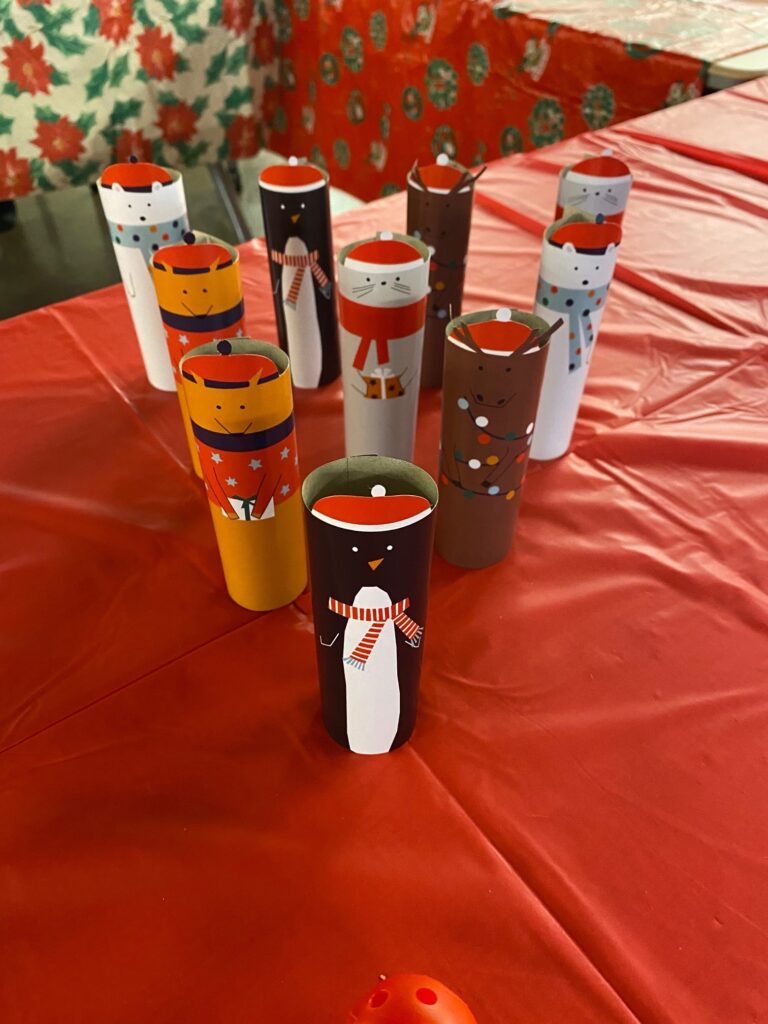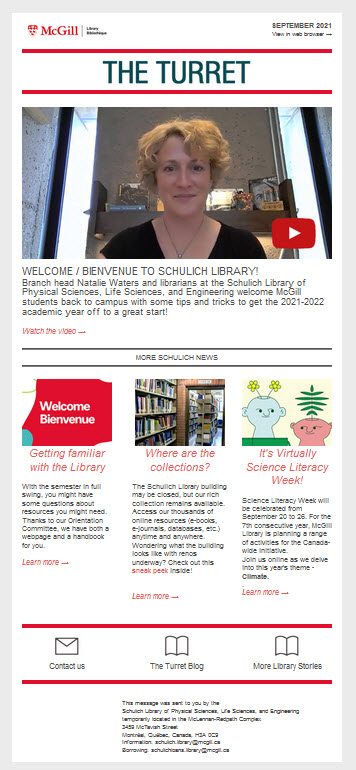Category Archives: Blog
Restoration Continues Apace
Dozens of representatives from all trades and occupations in the construction industry are making great progress with the restoration of the Macdonald-Stewart Library Building, home of the Schulich Library. All demolition work is finished and only construction phases remain. The work has unveiled many missed and forgotten windows, promising naturally brightened floors. New finishes and increased washrooms will ease your long hours of study.
To shed some light on how this is shaping up, here is a before photo of our very popular group study, 5th floor. Large swaths of floorspace had been closed off with the false walls that covered up our unique windows.

Here is a similar, panned-out view of that section, windows shining through. Women’s needs were woefully underserved in our building, and this floor will also include a large women’s washroom of ten stalls, as well as two individual, gender-neutral washrooms.

For more information on the renovation project, please see the project page
Metrics 3 x 3
I wanted to do a review of the 3 big citation indexes (Web of Science, Scopus, and Google Scholar) at 3 different levels (articles, authors, and journals), since there have been some noteworthy changes this year. Citations are only a part of the story so I will point out when alternative metrics are available, such as views and mentions on social media.
A bit of history: Web of Science was launched as the Science Citation Index in the 1960s, by the Institute for Scientific Information. One thing that they did that set them apart while they were gathering information from journals, was to include each paper’s list of references. It seems like a small thing but it revealed the relationships between papers, and also provided citation counts. Web of Science did not have any real competition as a citation index until 2004, with the launch of both Google Scholar and Scopus (from the publishing giant, Elsevier). While Web of Science is deep, indexing over 100 years of journal content, it is selective and therefore the coverage is not as wide as Google Scholar or Scopus.
- Article metrics
Citation counts may vary between the indexes, depending on their coverage of a subject. It is interesting to explore each one, and necessary to indicate where a count is coming from. The number is often highest in Google Scholar, since it can link to non-journal content like presentation slides.
Citations are useful in general because they allow you to move forward in time, finding newer papers that may be of interest. If a paper is important, you can always set up a citation alert to receive email notifications. Sorting your search results in Web of Science and Scopus by citations will also help you find those seed papers that are often referenced in your research area.
New in beta in Web of Science is the presence of enriched cited references in some records, with specifics on where in the text an article is cited, how many times, and in connection with which other references. They highlight hot papers, those published in the last two years with an unexpectedly high citation count over the most recent two months for their field. They also make it easy to find highly cited papers from the last 10 years.
Item-level usage counts came much later in Web of Science when people became interested in seeing alternative metrics. They count how many times people click on the full-text or export an item to a citation management program like EndNote (EndNote is available from McGill Library!). You can see which papers people are paying attention to in the last 180 days, or all time (really since 2013, when they began counting).
Scopus does have view counts, but they take alternative metrics further by integrating PlumX Metrics with 5 categories: Citations, usage (clicks and downloads), captures (bookmarks), mentions (blog posts, Wikipedia, etc.), and social media (tweets, Facebook likes, etc.).
2. Author metrics
Article citations are used to calculate author metrics. A popular metric is the h-index, where the number of citations an author has received meets their number of published papers (read about this index in Hirsch’s article in arXiv). Some criticisms of the h-index are that it is dependent on the age of the researcher and also on their field, so it shouldn’t be used for comparisons.
When searching for author metrics it is useful to have these identifiers on hand, if possible:
- ORCID (author registration required)
- Web of Science ResearcherID (author registration required)
- Scopus Author Identifier (automatically assigned to authors but the profiles can be claimed and verified)
- My Citations profile in Google Scholar (created by authors)
A new visualization in author profiles in Web of Science is the Beamplot, with citation data going back to 1980. Individual points on the plot represent the citations for a given paper, divided by the mean for papers in the same Web of Science subject category from that year.
3. Journal metrics
The Journal Impact Factor and other metrics for journals indexed in Web of Science are published each year in Journal Citation Reports. Web of Science is now a collection of subject indexes and Journal Impact Factor data is provided for journals in the Science and the Social Science Citation Index. This year, Journal Citation Reports has expanded to include the Arts & Humanities and Emerging Sources Citation Index journals, with their new metric: Journal Citation Indicator. It allows for comparison of journals across disciplines.
There is an updated CiteScore methodology in Scopus with a 4-year publication window (the Journal Impact Factor has 2 years to build up citations). You can choose to rank only open access journals in a subject by CiteScore. You can also find out what percentage of a journal is made up of review articles (reviews are often highly cited), or is never cited at all, by using the Scopus source comparison tool.
Google Scholar does have a metrics page that ranks journals by h5-index (h-index for articles published in the previous 5 years). They can be organized by category and sub-category.
Journal metrics are not meant to be used to judge the research of individuals, but they can come in handy when you are deciding on where to publish your research. Still, they are no substitute for the advice of trusted experts.
I probably went on for too long, so please let me know if you have any questions!
Citizen Science and the Cochrane Crowd
Are you interested in citizen science and health research?
Consider becoming a member of the Cochrane Crowd! The Crowd is a Cochrane initiative inviting volunteers to contribute to high quality, independent health evidence. Cochrane is a global, not-for-profit network of researchers aiming to gather and summarize research evidence to improve health outcomes. Research output has grown exponentially and there is a significant need to sift through large quantities of research on whether treatments work or how accurate diagnostic tests are, to name but a couple of examples.
Finding and classifying all the research on a given intervention or topic can be unfeasible for research teams with limited resources. This is where the Crowd comes in: Volunteers for the Cochrane Crowd help identify and categorize research by contributing to tasks such as screening records to pick out randomized controlled trials or studies on COVID-19. Just a few minutes a day can make a big difference when many hands make light work. Check out their FAQ for common questions and answers, and join the Crowd. You’ll be surprised by what you learn along the way.
New! The Turret Newsletter
Sign up to receive our quarterly newsletter, The Turret, directly to your inbox. The Turret brings you news on services, events, and other items of interest from the Schulich Library of Physical Sciences, Life Sciences, and Engineering.
Getting Familiar with the Library

With the semester in full swing, you might have some questions about resources you might need. Thanks to our Orientation Committee, we have both a webpage and a handbook for you.
Our Library Orientation page is a great one-stop-shop has all of the essential information about the library. This includes links to library hours, where to search for books and other materials, contacting a librarian and more.
Also in our orientation page is the beautifully created Library Matters handbook that has handy tips from fellow students, detailing what they wish they knew about the library when they first started at McGill. The handbook also has some fun activities like crosswords and colouring pages for you to enjoy.
Take a dive in and see you at the library!
Where are the Collections?
The Schulich Library building may be closed, but our rich collection remains available. Access our thousands of online resources (e-books, e-journals, databases, etc.) anytime and anywhere. EZProxy allows you to log in from off-campus, using your McGill username and password.
You can find our regular circulating titles in the Redpath Basement, while other popular Schulich material is located in the adjacent McLennan Library Building.
Looking for the ASTM Standards? The are located with the McLennan Reference Collection.
Need consumer health information? You will find the Wendy Patrick Health Information Collection on the second floor of the McLennan Library building.
Trying to find your print course readings? Look for them in the McLennan Course Reserve room.
It’s Virtually Science Literacy Week!

Science Literacy Week will be celebrated this September 20 to 26 with climate as the theme. We can help you become a citizen climate scientist with a workshop on capturing the McGill Observatory’s historical weather logs with DRAW, the Data Rescue: Archives and Weather Project.
You can also learn The Art of Explaining Science to Non-Specialists, or how to turn your research into a business, with From Science to Startup: A Beginner’s Guide to Entrepreneurship as a Researcher.
If you are looking for something relaxing this semester, McGill Visual Arts Collection invites you to a Science Literacy Week edition of their on-going De-Stress + Sketch series.
Our Science Literacy Week guide also has lots of virtual exhibits and links promoting resources and materials at McGill Library and beyond, including the wonderful Ocean School from the National Film Board of Canada.
Join us as we help spread the wonders of science Canada-wide!
COVID-19 & The Elderly: Why Does Age Play a Critical Factor in Disease Outcome?

Image from Wikimedia Commons
Thanks very much to Melisa Eraslan for submitting her MIMM 214 assignment to post on The Turret. This guest post will explain why older people are more vulnerable to COVID-19.
We are currently facing one of the biggest pandemics seen in history: coronavirus disease (COVID-19), an infectious disease caused by the coronavirus named SARS-CoV-2. Thus far, it has afflicted over 100 million people worldwide and taken the life of 2 million. (1) There is a vast heterogeneity in COVID-19 disease severity; the spectrum of infection ranges from mild to fatal outcomes. Amid various risk factors for severe infection, age is the largest one; older adults (aged above 60 years) are disproportionately afflicted, with the highest number of infections, complications, hospitalizations and deaths. (2) Although research is still underway, scientists have unveiled certain reasons why this age group is particularly vulnerable to COVID-19.
The heightened COVID-19 risk in the elderly is multifactorial. One contributing factor involves enhanced exposure to the coronavirus because of increased shedding from infected cells into the environment, atypical disease manifestation, and difficulty quarantining. (3) Moreover, increased frailty due to preexisting conditions (comorbidities) and the decline in organs’ physiological capabilities, also increase elders’ susceptibility to the virus. (4) Equally important, as age advances, the immune system weakens, which is called “immunosenescence.” (3)
The human immune system is composed of many cells, molecules, tissues and organs. Under normal circumstances, our immune system orchestrates a complex response, referred to as inflammation, which protects us of harm from small disease-causing infectious agents referred to as germs or pathogens. The immune system is separated into the innate immune system, our body’s first line of defense, and the adaptive immune system, our second-line force of acquired immunity against specific pathogens. Pathogens – namely, viruses – gain a foothold in humans by evading our built-in immune mechanisms to cause disease.
When encountered with a virus, innate immune cells secrete messenger molecules called type 1 interferons, which are warning signals prompting protective antiviral activity. (5) In older patients, SARS-CoV-2 is particularly stealthy in its strategy in bypassing our innate immune defenses, specifically, the triggering of these warning signals, which results in a delay in the innate immune response. (6) Furthermore, with aging comes chronic inflammation, referred to as “inflammaging.” (3) This is a baseline continual production of messenger molecules promoting inflammation (such as IL-6 and TNF-α). Although inflammation normally protects us, when triggered without appropriate stimulation from pathogens, or when overstimulated, it can be detrimental. Inflammaging compounded with the coronavirus can cause the aged innate immune response to flare out of control, exacerbating COVID-19’s impact on the elderly. (7)
On the other hand, the adaptive immune system surges into the battle field soon after the innate response. The adaptive system’s main fighters are T and B cells: immune cells specialized in defending against specific pathogens upon their activation. T and B cells are able to respond to new pathogens by directly and indirectly killing infected cells, and by secreting germ-neutralizing proteins called antibodies. Prior to their activation, these cells exist as “naïve” cells, not yet programmed to fight, but eagerly waiting to. In a recent study, Moderbacher et al. shows that this quantity of “naïve” T cells in our body dwindles with age, leaving elders depleted of T cells able to fight against new pathogens. (8) Fewer soldier cells dealing with never-before seen attackers, such as the coronavirus, increases disease severity in older adults.
Research continues unabated as scientists scramble to elucidate the full story behind COVID-19’s lethality for the elderly. What we do know is that the weakened and dysfunctional immune system in elders is a key part of the story, since it responds to the virus inadequately. On the bright side, the advent of COVID-19 vaccines is encouraging news for populations at risk, as vaccination is able to boost the weakened aging immune system. Needless to say, it is vital to follow pandemic regulations to protect our vulnerable populations from this disastrous virus.
References
- BBC News. Covid map: Coronavirus cases, deaths, vaccinations by country [Internet]. London ENG: BBC News; 2021 [updated 2021 Feb 6; cited 2021 Feb 7]. Available from: www.bbc.com/news/world-51235105
- Ottawa Public Health. Older Adults & COVID-19 [Internet]. Ottawa CAN: Ottawa Public Health; 2021 [updated 2021 Feb 5; cited 2021 Feb 7]. Available from: www.ottawapublichealth.ca/en/public-health-topics/Older_Adults_and_COVID-19.aspx
- Smorenberg AN, Peters ED, Daele PA, Nossent ES, Muller MA. How does SARS-CoV-2 target the elderly patients? A review on potential mechanisms increasing disease severity. Eur. J. Intern. Med. [Internet]. 2020 Nov 30 [cited 2021 Feb 6]; 83(1):1-2. Available from: doi.org/10.1016/j.ejim.2020.11.024
- Begley SH. What explains Covid-19’s lethality for the elderly? Scientists look to ‘twilight’ of the immune system [Internet]. STAT News; 2020 Mar 30 [updated 2020 Apr 1; cited 2021 Feb 7]. Available from: www.statnews.com/2020/03/30/what-explains-coronavirus-lethality-for-elderly/
- Murphy KE, Weaver, C. Janeway’s Immunobiology. 9th edition. Washington: WW Norton & Co; 2016 Jun 13.
- Sette AL, Crotty SH. Adaptive immunity to SARS-CoV-2 and COVID-19. Cell [Internet]. 2021 [cited 2021 Feb 6];1(6):10-11. Available from: doi.org/10.1016/j.cell.2021.01.007
- Nidadavolu LO, Walston JE. Underlying Vulnerabilities to the Cytokine Storm and Adverse COVID-19 Outcomes in the Aging Immune System. J. Gerontol. [Internet]. 2020 Aug 25 [cites 2021 Feb 5];1(209): 2-4. Available from: doi.org/10.1093/gerona/glaa209
- Moderbacher CA, Ramirez SY, Dan JE, Grifoni AL, Hastie KA, Weiskopf, Belanger SI. Antigen-Specific Adaptive Immunity to SARS-CoV-2 in Acute COVID-19 and Associations with Age and Disease Severity. ScienceDirect [Internet]. 2020 Nov 12 [cited 2021 Feb 6];183(4):996-1012 Available from: doi.org/10.1016/j.cell.2020.09.038
Sneak peek inside Schulich Library
We cannot wait to welcome you back to the Schulich Library of Physical Sciences, Life Sciences, and Engineering. With renovations of the Macdonald-Stewart Library Building at 20% completion, we thought that it might be time to show you how things are going on the inside.
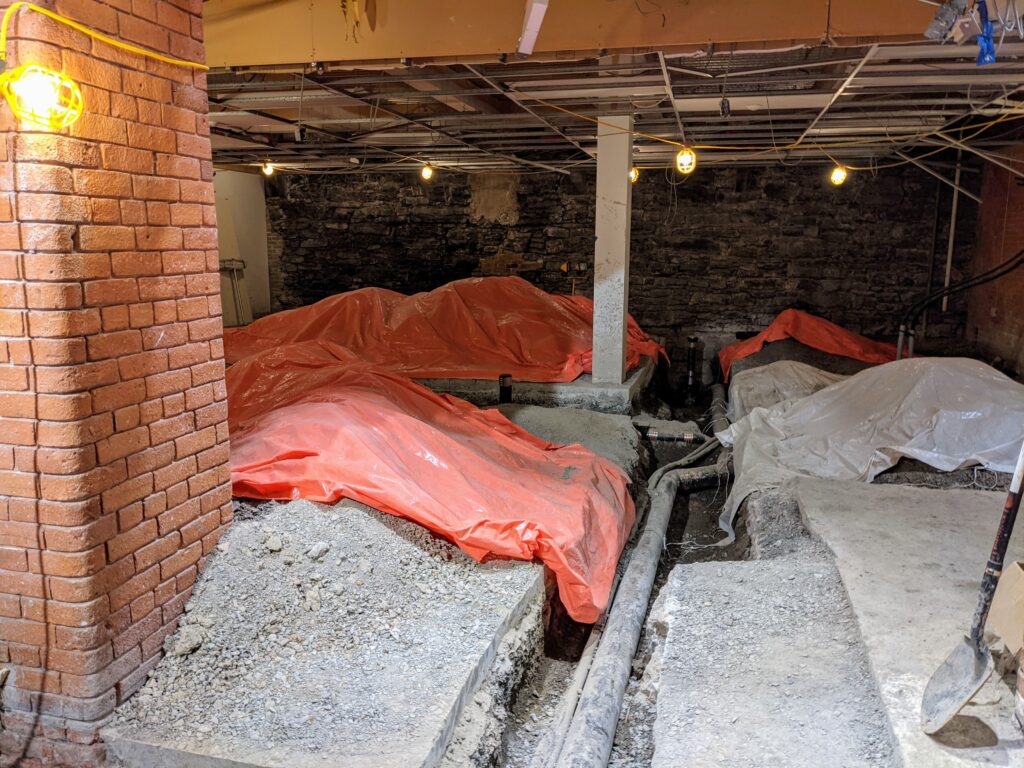
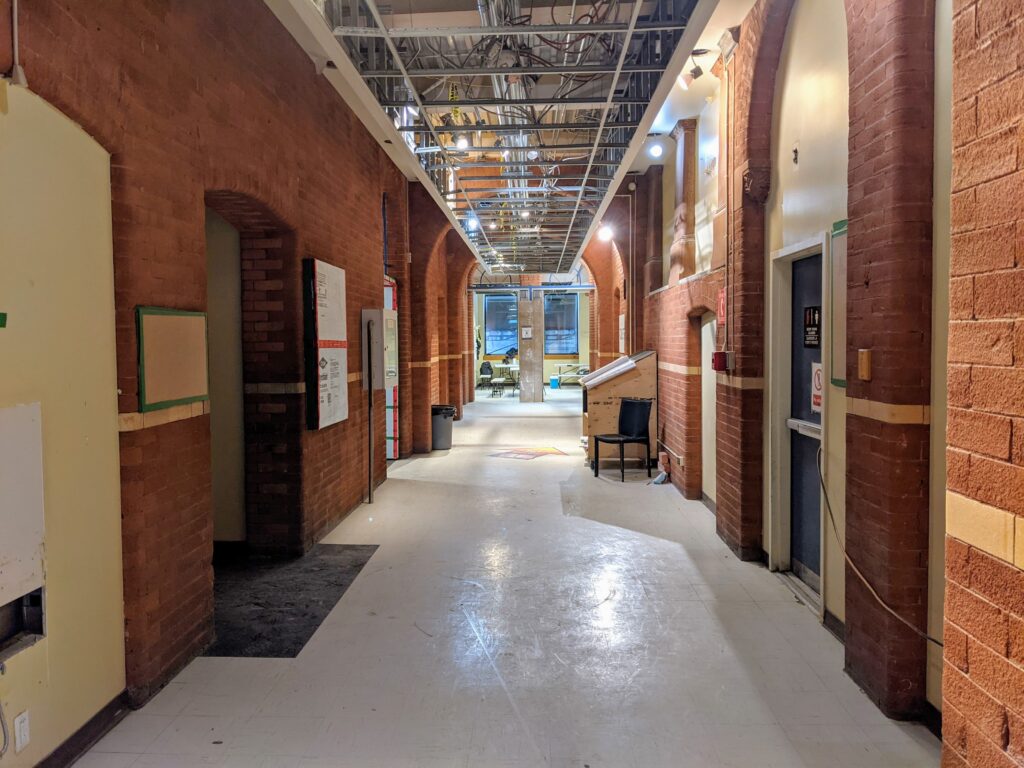

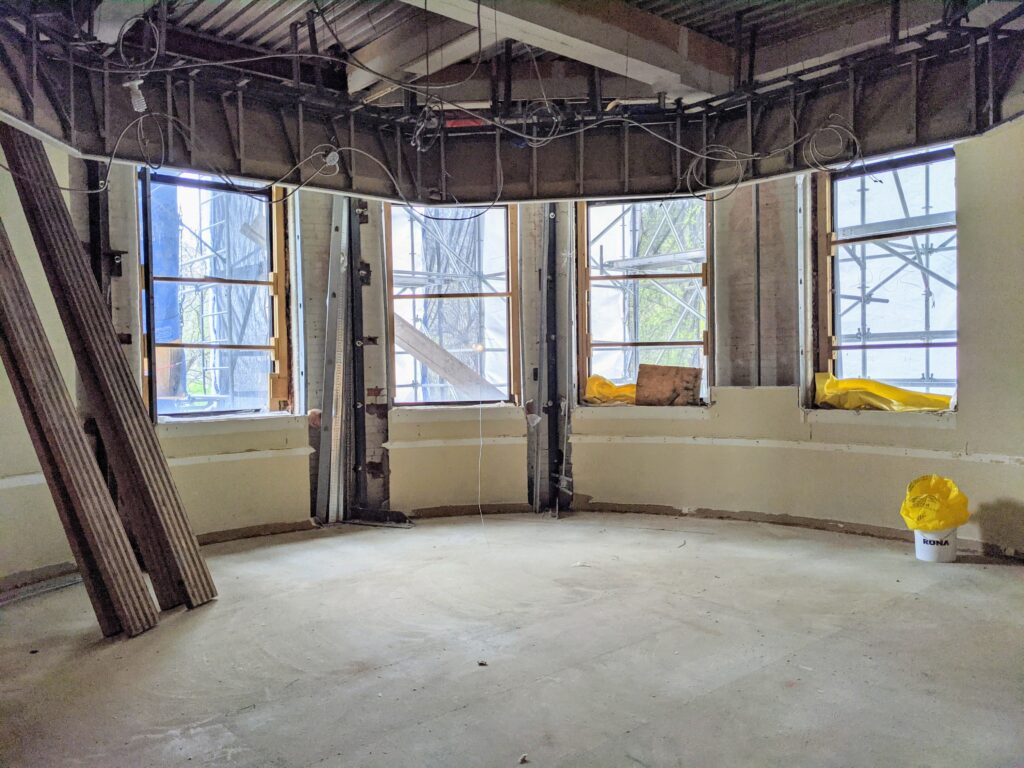
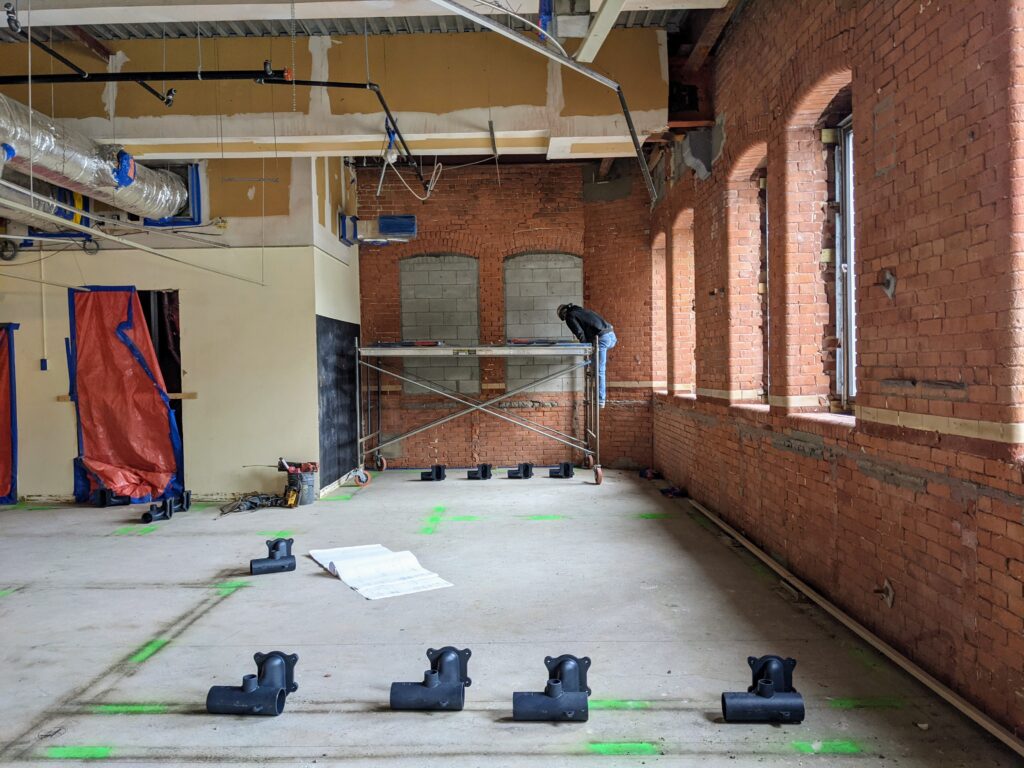


For more information on the renovation project, please see the project page.
All photos credit: Merika Ramundo, 2021-05-04

